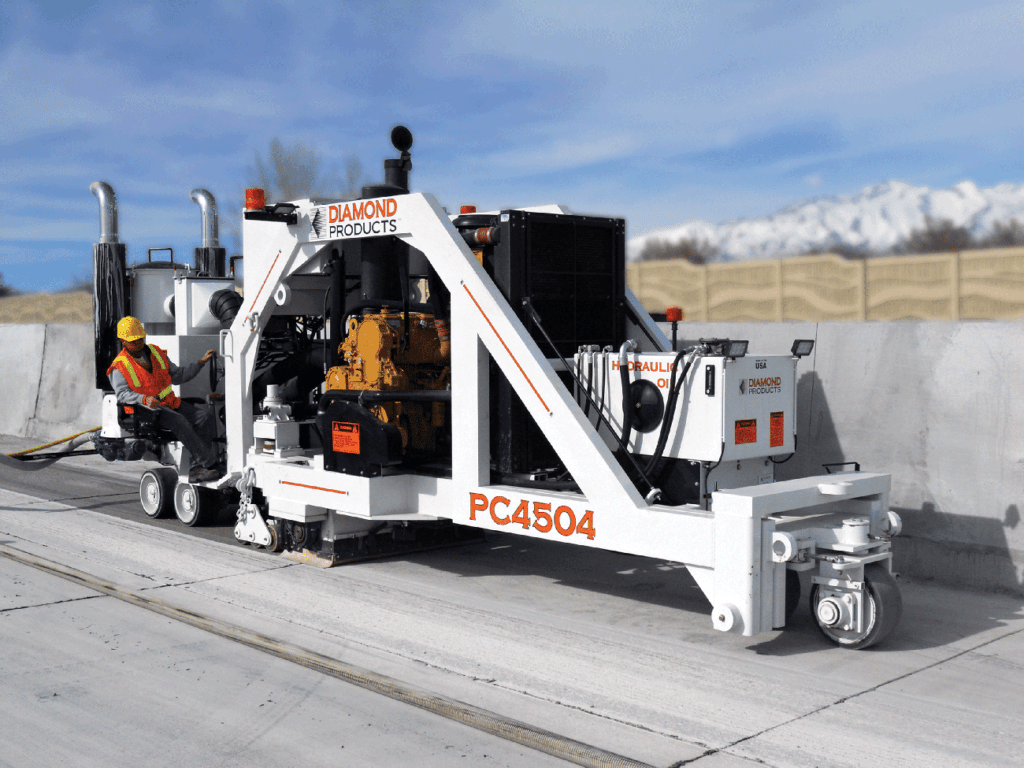Did you know that diamond ground surfaces last between 8 and 10 years? Well, diamond grinding is gaining attention as a long-lasting pavement preservation treatment. It can help restore the desired surface characteristics of a roadway or bridge deck surface.
Pavement grinding can correct surface imperfections on your asphalt and concrete pavements. It’s even possible to combine it with other tactics for improved outcomes. These techniques may include dowel bar retrofit, road slab stabilization, and partial-depth repair.
The immediate effect of grinding is a great improvement in texture, smoothness, and rideability. Other benefits include safety, noise reduction, and skid resistance. Learn more about them in this guide.
What is Diamond Grinding
Diamond grinding consists of the removal of a thin layer of hardened PCC, otherwise known as Portland Cement Concrete, roadway or bridge deck using equipment mounted with hundreds of closely spaced diamond blades. 1/8” to ¼” of material is usually removed via diamond grinding, with isolated deeper areas of removal if there are larger variations in the surface area.
The diamond grinder typically has a 3 foot to 4 foot wide diamond head consisting of up to 240 diamond blades stacked closely together with small spacers in between. Each grinding pass is 3 foot to 4 foot wide, depending on the type of grinder used.
Diamond grinding is performed in a longitudinal direction, beginning and ending at lines normal to the pavement centerline. Grinders typically weigh at least 35,000 lbs and have a wheelbase of at least 12 feet.
A diamond grinder works like a giant wood planer, with the diamond head acting as the iron or chisel and the front bogey wheels and rear depth control wheels following the contour of the surface to grind thin, uniform strips from the surface to improve smoothness.
Benefits of Diamond Grinding
1) Improved Ride-ability
Diamond grinding is primarily used to improve the ride-ability of a roadway or bridge surface. Surface irregularities caused by the initial placement of concrete, curling, slab warping, and faulting between slabs are significantly improved by diamond grinding.
Great ride quality is crucial for the comfort of a vehicle’s passengers. It helps reduce driver fatigue and cargo damage during long rides. Also, it improves the driver’s control of the vehicle by lowering obstacles on the road.
In addition, a smoother riding surface reduces dynamic loading on the roadway or bridge, increasing the life of the concrete. As vehicles drive over bumps and dips, they bounce vertically on their suspensions resulting in increased dynamic impact and stress to the surface. A smoother surface reduces this impact and increases the life of the roadway or bridge surface.
2) Enhanced Surface Texture and Skid Resistance
Diamond grinding also results in enhanced surface texture and skid resistance. The diamond blades and spacers that are stacked on the grinder’s diamond head leave a corrugated surface on the concrete. This improves the surface macro-texture and improves cornering friction and directional stability.
Diamond grinding has also been found to reduce the effects of hydroplaning by improving drainage of water at the tire-pavement interface, improving friction in wet environments especially for balding tires.
3) Reduced Road Noise
Longitudinal diamond grinding provides a quieter surface than unground surfaces. Measurements on highways in Belgium indicate a reduction of up to 5 dBA in pavement noise levels.
Furthermore, the Michigan Department of Transportation also found that ground surfaces result in a change in the frequency of highway noise. The results indicated that with diamond grinding implemented, there were reduced peak frequencies of 500 Hz and the first harmonic of 1000 Hz. The result is a much more pleasant sounding ride.
4) Cost Effective
Diamond grinding is a more cost-effective method of pavement preservation than other methods, including bituminous overlays. In many instances, the cost of diamond grinding can be about half the cost of an asphalt overlay.
Diamond grinding also does not raise the pavement surface elevation and therefore does not affect overhead clearances underneath bridges. Grinding does not reduce the drainage capacity of curbs and gutters either
5) Time Efficient
Diamond grinding can be performed during off peak hours with shorter lane closures than bituminous overlays. Adjacent lanes don’t have to be closed either. Therefore diamond grinding is much more time efficient than other methods.
Need Pavement Grinding and Grooving Services?
Pavement grinding and grooving can improve the existing pavement’s look, feel, and functionality. These techniques are quite cost-effective and time-efficient to carry out.
Count on J.P. Hogan Concrete Coring and Sawing for all your diamond grinding needs. Services you can seek include scanning, sawing, grinding, core drilling, and sealing.
Request an estimate for pavement grinding today to get yourself started.



